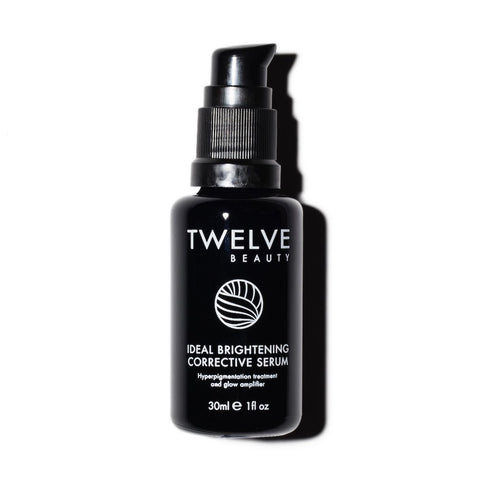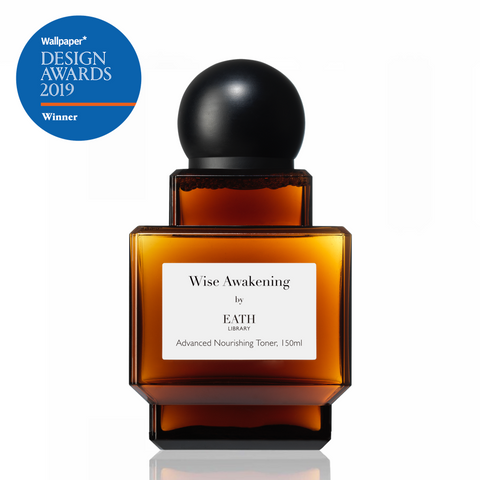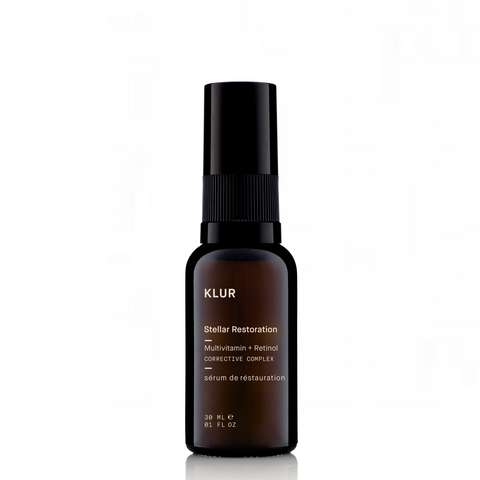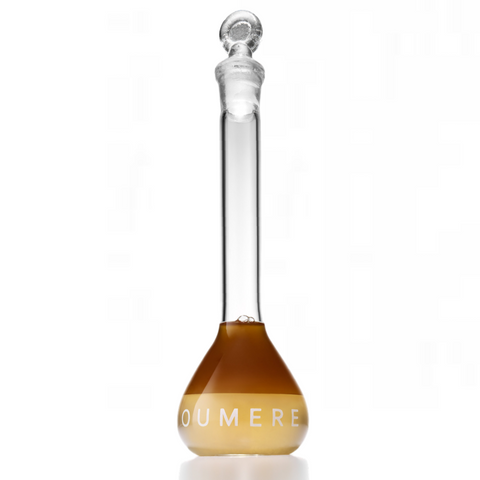Free shipping for HK orders HK$600+
Top 30 Skincare Questions Answered - Part 2
November 01, 2022
Over the years, we have been asked so many different skincare questions, many of which are the result of all the myths and misconceptions circulated online. We have therefore compiled top 30 questions, and have gone through 10 of them focusing on anti-aging and collagen in the last article (here).
Today, let's focus on pigmentation, and pore care.
That would be too late!
Hyperpigmentation is multifactorial. When there is inflammation in the skin, which can be caused by UV damage, acne, picking and irritating the skin, free radicals, harsh cleanser, and hormonal fluctuations, such as pregnancy or taking contraceptive pills, a signal is sent to the melanocytes as part of an immune response. The melanocytes then overproduce the brown melanin pigment, resulting in the hyperpigmentation on the skin that we see. Whilst, genetic, metabolic, hormonal and environmental factors will determine their severity, how long they will linger, and how they are best treated.
Here's an extremely simplified version of how pigmentation is formed.

- UV rays, pollution, irritants, inflammations, etc. stimulate the production and release of melanocyte-specific factors.
- Tyrosinase activity is stimulated, and melanin production in the melanosomes becomes active within the melanocytes, thus increasing the number of darkened melanosomes.
- Once the melanosomes darken and mature, they move from the melanocytes to the epidermal cells in large quantity.
- The epidermal cells filled with matured melanosomes then slow down turnover, and accumulate at different layers of the skin.
- Darkened epidermal cells remain in the epidermis, thus making the skin appear darker.
This essentially means, one shouldn't only use brightening products during summer or occasionally when they start seeing hyperpigmentation, as once they become visible, it could only mean that there are tons of already pigmented cells accumulated at all layers of the skin. And because melanocytes are literally being stimulated every single day, matters will only get worse.
Product Recommendation
EATH LIBRARY
The Pure Wonder Active Serum <- Click to shop
Product Recommendation
TWELVE BEAUTY
Ideal Brightening Corrective Serum <- Click to shop
The most misunderstood idea about hyperpigmentation is that it dissolves and melts away. It doesn't, and can't.
Here's the scientific truth——melanin production begins in the deeper layers of the skin, and then naturally rises to the surface where it concentrates and become what we perceive as pigmentation. The skin is constantly regenerating, which means the pigmented cells will eventually shed off. Unfortunately, melanin tends to form faster than it is shed away, thus if left accumulated, pigmentation issues will become deeply rooted and hard to improve. What this means is, there are two key categories in improving hyperpigmentation: treatment and prevention.
For those already pigmented cells, you can treat them by using retinol and speeding up cell turnover with acids. Because they literally come from the deep layers of the skin to the skin surface to get shed off, sometimes you will find them getting visibly darker first before turning lighter, but that is absolutely normal and part of the improvement process.
As for prevention, it means you have to slow down and prevent melanin overproduction, which can be done by inhibiting tyrosinase activity, reducing skin inflammation, and preventing photoaging throughout the year, not just during summer or when you start seeing spots appearing.
Here's the catch. Tyrinosase activity and melanin production are stimulated everyday via different pathways and cells, and no one single ingredient can do everything. Therefore, while vitamin C is effective, a multi-angle approach using a cocktail of ingredients must be used to effectively fade existing and prevent future pigmentation.
So don’t be fooled by all the products and marketing gimmicks that claim to banish all hyperpigmentation in 7 days (or even 28 days, really). Ask any dermatologist and they will tell you hyperpigmentation is never an overnight fix. It is a long fight and requires consistency.
The truth is, some products simply use light-reflective ingredients in their formulas to trick the eyes and give you a false sense of lightened hyperpigmentation or even skin tone. Ever feel like once you stop using a certain product, the hyperpigmentation instantly comes back, and skin seems less radiant? Well of course, because they never went away in the first place!
Product Recommendation
KLUR
Brilliant Light Multi-Correction Repair Serum <- Click to shop
Product Recommendation
EATH LIBRARY
Wise Awakening Advanced Nourishing Toner <- Click to shop
As you see from the above image, darkened and matured melanosomes move from the melanocytes to the epidermal cells in large quantity, then slow down turnover, and accumulate at different layers of the skin.
Now, these epidermal cells filled with darkened melanosomes do not just disappear. They need to move from deep in the skin to the skin surface and then shed off, so that the newer cells without these darkened melanosomes can rise to the surface, which, in our eyes, equals to the fading of pigmentation. Thus, it is absolutely natural for pigmentation to appear darker as the pigmented cells rise to the surface to be shedded. This is just how the skin works and the natural process of pigmentation fading.
This is most apparent if the brightening product you use can stimulate cell turnover to help the pigmented cells to leave the skin. If you stop using it as soon as the pigmentation appears to darken, then the cell turnover would once again slow down and the pigmented cells would keep accumulating in the skin. So keep pushing through it.
Product Recommendation
KLUR
Stellar Restoration Corrective Complex <- Click to shop
Laser treatments can only target and improve existing pigmentation on the surface of the skin, but the pigmented cells accumulated deep in the skin still exist and will slowly rise to the surface. They cannot prevent melanocytes from being stimulated and produce excess melanin either. In addition, many people do not do enough sun and barrier protection after laser treatments, which then lead to an increase in melanin production. In fact, studies have found that more than 70% of people who have received laser treatment will see pigmentation reappearing, some even worse than before.
Therefore, in order to return the pigmented cells deep in the skin to their original state, and prevent further production of excess melanin, daily brightening and anti-inflammation care is actually a must besides sunscreen.
Product Recommendation
EATH Library
All Day Radiance Light Concentration Cream <- Click to shop
There are three main reasons (besides health issues) that skin can turn yellowish and lack transparency: 1) over-production of melanin; 2) glycation; and 3) lack of sleep.
Receptors for AGEs are found in both the epidermis and dermis, more so in the sun-exposed areas of the skin as compared to other areas. In addition, AGEs gradually accumulate on the skin's existing collagen over time, which causes the collagen to turn brown and the skin to turn yellow, besides other issues such as wrinkles, sagging, and lack of elasticity.
Lack of sleep can also result in an increase of the yellow pigment called "bilirubin", which is part of the red blood cells. Studies have shown that once bilirubin content increases in the skin, it can cause a yellow haze which lasts at least five days, and catching up on sleep cannot speed up its fading.
So yes, using brightening products do help, but you also need to consider other aspects of your life——cut the sugar and fried, processed foods, and sleep more!
Product Recommendation
MARIE REYNOLDS LONDON
Skin Quencher <- Click to shop
Product Recommendation
EATH LIBRARY
The Bright Recovery Brightening Overnight Mask <- Click to shop
A lot of people actually start using less sunscreen after wearing face masks, thinking that half of their faces are covered most of the time. Here's the thing. Studies have shown that surgical face masks are ineffective against blocking out UV. Results have further shown that even if sunscreen is worn, face masks can rub it off in as little as an hour, especially around the nose and cheeks area.
In addition, constant abrasion against the mask can damage the skin barrier and cause inflammation, which then leads to dehydration and overproduction of melanin, and subsequently dullness and pigmentation.
So, while it is still impossible to go mask-less, there are four things you can do: 1) wear sunscreen no matter what; 2) wear foundation, so it forms a physical barrier between the mask and sunscreen; 3) use anti-inflammatory products, so melanin production won't be stimulated continuous by inflammations; and 4) keep the skin hydrated and repair, maintain the skin barrier.
Product Recommendation
MARIE REYNOLDS LONDON
Restore <- Click to shop
Temperature and humidity rise inside the mask, which could lead to an increase in sebum production. On the other hand, the constant friction between the skin and the mask damages the skin barrier, and in an attempt to repair the barrier that is primarily made of lipids, the skin secretes excess sebum. To get rid of this oiliness, many people then over-cleanse using harsh cleansers and cleansing brushes, which further destroys the barrier, and causes even more oiliness. In fact, most people tend to focus on surface oiliness, instead of dealing with sebum that is clogged inside the pores. Enlarged pores and increase of blackheads are signs.
Whilst, constant mask on/mask off, and trying to squeeze out the blackheads can irritate the skin, disturb the skin barrier, and make the skin texture appear rougher and pores appear larger.
The right way to deal with enlarged pores and blackheads is double cleanse daily, use a retinol product, and treat with a kaolin mask and acids weekly.
Remember how oils and water don’t mix? Impurities, including makeup, sebum, and some pollutants, are oil-based, thus simply cannot be thoroughly removed by a water-based cleanser. When you rely on one single water-based cleanser to cleanse and remove makeup at night and call it a day, some of those substances will remain on the skin even after rinsing with water, eventually congesting the pores.
Using an oil-based cleanser first, which is designed to remove such oil-based particles, can remove this first layer of impurities, giving way for the second water-based cleanser to really get to the skin and remove water-based debris such as sweat and dirt.
Product Recommendation
Agent Nateur
holi(cleanse) Cleansing Face Oil <- Click to shop
You may also want to use a cleanser enriched with charcoal. Charcoal is a well documented skin purifier capable of naturally removing impurities and excess oil, making it a great ingredient for skin prone to enlarged pores, blemishes and acne.
Product Recommendation
TWELVE BEAUTY
Charcoal Peace Calming Cleanser <- Click to shop
Three times a week, use an acid-based treatment to exfoliate and clear pores. AHAs (alpha-hydroxy acid) and PHAs (polyhydroxy acid) can dissolve the bond between dead skin cells to exfoliate, allowing spots to fade faster and skincare products to penetrate better. Whilst, BHA (beta-hydroxy acid), which is oil-soluble, can penetrate into and clear out pores, preventing acne and blackheads.
Acids may sound irritating to many, however, with the right formulation and concentration, they can be used by all skin types, even sensitive, rosacea, and eczema prone skin, to target acne, pigmentation, uneven skin tone, rough texture, and allow skincare products to penetrate better. What’s better, long-term use can also increase collagen and hyaluronic acid deposition and synthesis within the dermis, so the skin will appear more plumped, smooth and bouncy!
You can read more about the differences and effects of various types of AHA, BHA, and PHA here.
Product Recommendation
OUMERE
No. 9 Exfoliant <- Click to shop
Twice a week, use a kaolin clay-based mask. Commonly used in skin care products due to its ability to absorb excess oil or sebum, clear pores, prevent acne, and smooth skin, kaolin may also offer mild anti-inflammatory, antibacterial and healing benefits.
As it is gentler on the skin than other types of clay, it is suitable for all skin types, including sensitive and inflammatory skin.
Product Recommendation
TWELVE BEAUTY
The London Mask <- Click to shop
On the other hand, retinol is one of the few potent anti-aging, anti-acne ingredients that is widely recognized by both the dermatological and scientific communities. This star ingredient not only activates collagen and epidermal growth factor receptors, but also promotes cellular turnover, thereby reducing wrinkles, acne, dullness, scarring, hyperpigmentation, rough skin texture, and enlarged pores, making it a great treatment ingredient for congested skin.
Product Recommendation
KLUR
Sculpture + A Overnight Enrichment Cream <- Click to shop
The truth is, our pore size is genetically determined, thus their sizes cannot be physically changed. In addition, because pores are not muscles, contrary to popular belief, they do not and cannot open or close.
What steam or warm towel does, is help loosen the oil, wax and dirt inside the pores, making them easier to be cleansed away, but won’t actually open the pores like a door. When there is nothing clogging the pores, they would obviously appear smaller. Same goes with cold water. It can temporarily cause the skin to tighten, like goosebumps during winter, but it won’t affect your actual pore size whatsoever.
Now when you come across phrases like "open the pores" and "close the pores", you'd know the one who wrote it does not know the absolute basics of how the skin works.
If you follow the above steps consistently——double cleanse daily, using retinol regularly, and follow up with kaolin mask and acids weekly, then you shouldn't have too much of an issue in the middle and long-term.
However, if you have just started, and are in a SOS situation, then you can try the following method:
- Remove all makeup and cleanse your face;
- Shower, and let the steam from your shower soften the clogged dirt and oil in the pores (again, pores do not have muscles thus do NOT open or close, stop believing in that crap);
- Get out of the shower, make sure the face is dry, then immediately apply a layer of cleansing oil, massage to spread it all over, and leave on for 5 minutes to let it melt away the now softened clogged dirt and oil (oils remove oils, that is something water-based cleansers cannot do);
- Rinse off with warm water;
- Apply a layer of cleansing mask that contains kaolin, which is gentle enough for all skin types including sensitive skin, to absorb all that melted dirt and oil
- Rinse off the cleansing mask with warm water, then follow with your usual toner, serums, etc.
Also, one thing to remember. Do not squeeze with your fingers. First, even if you have washed your hands, there could still be bacteria hiding in your fingernails. By squeezing, you are introducing new bacteria into the pores. Secondly, squeezing, just like the pulling action from using pore strips, will traumatize the skin, damage the skin barrier and pore lining, resulting in more clogged pores, acne, and enlarged pores that cannot be shrunk in the future.
Product Recommendation
Agent Nateur
holi(bright) Resurface Glass Face Mask <- Click to shop
KLUR
Supreme Seed Delicate Purification Mask <- Click to shop
Enlarged pores due to aging is a direct result of loss of skin elasticity and sagging caused by a depletion of collagen and elastin. Using collagen-boosting ingredients as mentioned in our previous article "Top 30 Skincare Questions Answered - Part 1"——retinol, niacinamide, vitamin C, peptides, acids, and calcium ketogluconate, as well as taking collagen and pearl supplements, can help preventing them appear large and dragged down into an oval shape.
Another thing is to repair and protect your skin barrier. Our skin barrier is made up of ceramides, cholesterol and saturated fatty acids, but the level of sebum inevitably declines with age. Without enough oil to constantly maintain the barrier, issues like inflammation, dryness, etc. will arise, which will in turn make the pores more noticeable.
By adding in an oil to replenish the lost lipids, not only will the skin reduce its own sebum production in an attempt to repair the barrier, the countless nutrients and anti-inflammatory, age-defying, soothing benefits will also help reduce the appearance of pores.
Product Recommendation
OUMERE
Serum Bioluminelle™ <- Click to shop
Product Recommendation
MARIE REYNOLDS LONDON
Elixir™ <- Click to shop
Part 3 will come on November 16, so stay tuned!
Also in The Journal

The Anti-Aging Gold Standard: How Retinol Reshapes The Skin
November 12, 2025
Learn why retinol is the gold standard for anti-aging, how it works, what similar ingredients exist, and some common myths and misconceptions.

The Gut-Skin Connection: The Path to Healthy Skin
October 26, 2025
Acne, eczema, rosacea, and sensitivity can all be linked to the gut health, and even gluten? Learn all about the connection between the gut and the skin.

The Secret to Reversing Skin Aging! How Growth Factors & Peptides Help Turn Back the Clock
October 13, 2025
Tired of wrinkles, sagging skin, lack of elasticity, inflammation, dryness, and even hair loss? Learn how growth factors and peptides reverse skin aging.
+Recent Articles
-
The Anti-Aging Gold Standard: How Retinol Reshapes The Skin
November 12, 2025
-
The Gut-Skin Connection: The Path to Healthy Skin
October 26, 2025
-
The Secret to Reversing Skin Aging! How Growth Factors & Peptides Help Turn Back the Clock
October 13, 2025
-
The Best Ways and Times to Take Different Supplements
August 19, 2025
-
Luxury vs. Budget-Friendly Skincare Products——What Are Their Differences?
August 06, 2025
-
How to Prevent and Improve Post-Inflammatory Hyperpigmentation (PIH)
July 10, 2025
-
How to Prevent and Improve Post-Inflammatory Erythema (PIE)
July 08, 2025
-
The Ultimate Cleansing Guide to Improve Skin Conditions
June 03, 2025
-
Do You Have Sugar Face? How Does Sugar Affect Our Skin and Appearance?
May 20, 2025
-
Do You Have Gluten Face? How Does Gluten Affect Our Skin and Appearance?
April 15, 2025
Subscribe to get skincare knowledge delivered to your inbox!




















